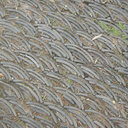Melanin-originated carbonaceous dots for triple negative breast cancer diagnosis by fluorescence and photoacoustic dual-mode imaging.
Açar sözlər
Mücərrəd
Carbonaceous dots exhibit increasing applications in diagnosis and drug delivery due to excellent photostability and biocompatibility properties. However, relative short excitation and emission of melanin carbonaceous dots (MCDs) limit the applicability in fluorescence bioimaging. Furthermore, the generally poor spatial resolution of fluorescence imaging limits potential in vivo applications. Due to a variety of beneficial properties, in this study, MCDs were prepared exhibiting great potential in fluorescence and photoacoustic dual-mode bioimaging. The MCDs exhibited a long excitation peak at 615nm and emission peak at 650nm, further highlighting the applicability in fluorescence imaging, while the absorbance peak at 633nm renders MCDs suitable for photoacoustic imaging. In vivo, the photoacoustic signal of MCDs was linearly correlated with the concentration of MCDs. Moreover, the MCDs were shown to be taken up into triple negative breast cancer cell line 4T1 in both a time- and concentration-dependent manner. In vivo fluorescence and photoacoustic imaging of subcutaneous 4T1 tumor demonstrated that MCDs could passively target triple negative breast cancer tissue by enhanced permeability and retention effects and may therefore be used for tumor dual-mode imaging. Furthermore, fluorescence distribution in tissue slices suggested that MCDs may distribute in 4T1 tumor with high efficacy. In conclusion, the MCDs studied offer potential application in fluorescence and photoacoustic dual-mode imaging.





